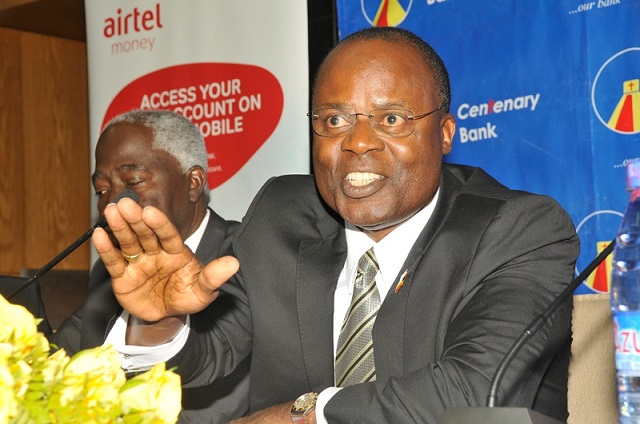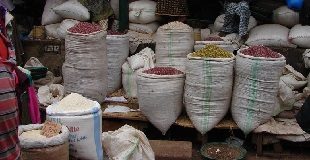
Key indicators remain largely unchanged
Kampala, Uganda | JULIUS BUSINGE | 2017 appears to have been a good and bad year for Uganda’s economy even as key indicators remained largely unchanged.
Bank of Uganda’s monetary policy tamed inflation to below the set target of around 5% as well as stabilised exchange rate to around Shs 3,638 per US dollar as at the of last month.
Revised numbers from Uganda Bureau of Statistics (UBOS) show that the economy’s Gross Domestic Product (GDP) improved minimally to 4% up from earlier projections of 3.9%; but this growth is unimpressive because it is lower than 4.6% recorded in Financial Year 2015/2016.
According to BoU data, the minimal growth recorded in revised numbers for FY2016/17 was attributed to stronger activity in the agriculture sector specifically cash crops – coffee – and upward revisions in the services sector especially for trade and repairs and commercial banks activity. Private consumption also improved in FY2016/17 relative to the previous two years.
However, the country’s export earnings decreased from US$863.6 million to US$793.1million in the quarter – October 2017 and the current account deficit deteriorated from US$303.9 million to US$520.1million during the quarter to October, 2017 – largely driven by developments in the goods account.
Positively, in the same period, direct investment inflows recorded a US$53.5million increase to US$177.2million.
Looking ahead, the BoU says the current account deficit is likely to worsen driven by a rise in the import bill associated with the festive season. However, the Bank says this could be moderated by increased personal transfers.
Also, in the medium term, the current account balance is likely to widen further as the import bill rises largely on account of the continued pickup in economic activity.
Issuing the monetary policy statement for the ending year on Dec. 18, Deputy Governor of BoU, Louis Kasekende said domestic economic conditions have improved since earlier in the year, supported by easing of monetary policy, growth in public spending and continued strength in the global economy.
Kasekende announced that the Bank was keeping the central bank rate, a policy tool that signals direction of interest rates, unchanged at 9.5%, the lowest mark ever since 2011 when it was introduced.
“Based on the outlook for inflation and economic activity, together with an expansionary fiscal policy in FY 2017/18; and the evolution of the risks and uncertainties, the Bank of Uganda judges that the current stance of monetary policy remains appropriate,” he said.
For most parts of this year and in 2016, the reduction in the CBR has driven down commercial bank lending rates to an average of 18.9% from 24% in most parts of 2016 and 2015.
The reduction in interest rates however did not boost appetite for loans. Commercial banks under their umbrella body, Uganda Bankers Association (UBA) said that by the end of the year, they had about Shs 2 trillion for lending but there was no demand for it especially from the private sector.
Even the little they had lent out, they did so in fear of recent spikes in non-performing loans that was recorded at 10.5% as at December 2016 compared to 5.3% recorded a year before. In 2017, according to Justine Bagyenda, the executive director in charge of banks supervision at BoU, credit risk has been the major highlight in banking in 2017 reflected by an increase in NPLs.
She said that as at September 30, NPLs had hit 7.2% up from 6.2% as at June 30, attributing it to the increase in loans that were put on the ‘watch list migrating to non-performing territory.’
“Below 5 % is very strong; below 10% is satisfactory, we are not having sleepless nights; but above 10 %, that is when we start to get concerned and ask why.”
She said banks are key drivers of economic activity in any economy – and if they are underperforming, the economy in which they operate suffers.
Kasekende, experts describe 2017
When asked to summarise Uganda’s economy in 2017, Kasekende did not say much: “2016 was a difficult year; 2017 has been much better in terms of agriculture performance which is going to be supportive of GDP and private investment. Credit growth is peaking up especially for agriculture sector and for individuals.”
Economic experts that routinely follow the economic performance seemed not to differ from Kasekende apart from a few policy suggestions they offered for the future.
Lawrence Bategeka, an economist and vice chairperson of the Parliament Committee on National Economy told The Independent that performance of 2017 means that “we are recovering from a downturn which was not only witnessed in 2016 by Uganda but also the Sub-Saharan countries driven by both internal and external factors.”
“Macro economy has been largely okay although there remain concerns over high interest rates,” Bategeka said, adding that there’s need to put in place producer marketing boards to deal with fluctuation of agriculture prices.
Anthony Akol, Uganda’s shadow minister of finance told The Independent that he does not believe that 2017 was a good year given that political protests against lifting of the presidential age limit from the Constitution were rampant and could have slowed down economic activity in major sectors like tourism.
“I don’t believe in their (government) numbers. They are cooked,” he said. He said that he has proposed to government to put in place an independent body – Economic Stabilization Board (ESB) consisting of economic experts and top government officials from BoU and Ministry of Finance who should regularly monitor the economy and report to government and Parliament regularly action.
Economic outlook
Kasekende said that in the medium term, the economy is expected to expand at a faster pace boosted by public investments, increasing growth in consumption and improved agricultural productivity.
He said projections are that the economy would record improvement in GDP to 5-5.5% by end of this financial year, with inflation forecast to converge at 5% target in the medium term.
 The Independent Uganda: You get the Truth we Pay the Price
The Independent Uganda: You get the Truth we Pay the Price


